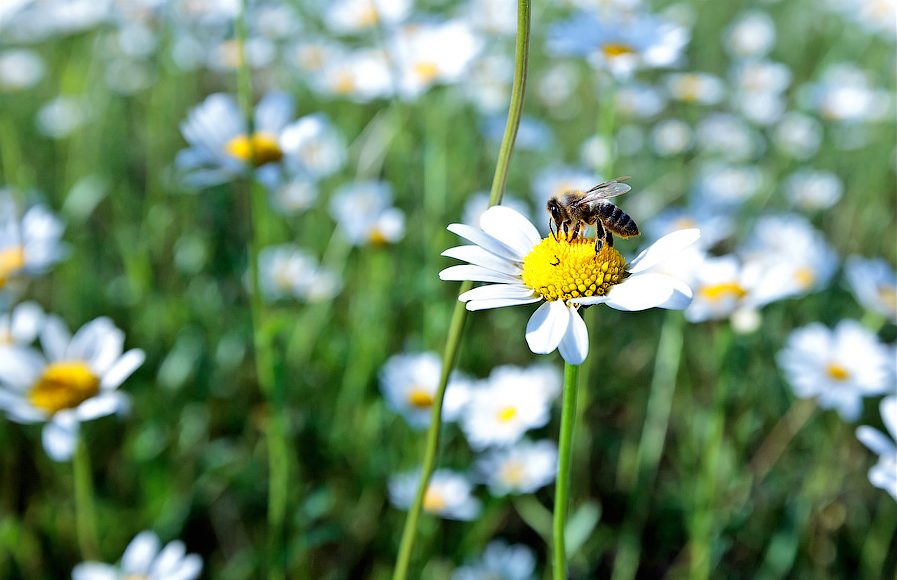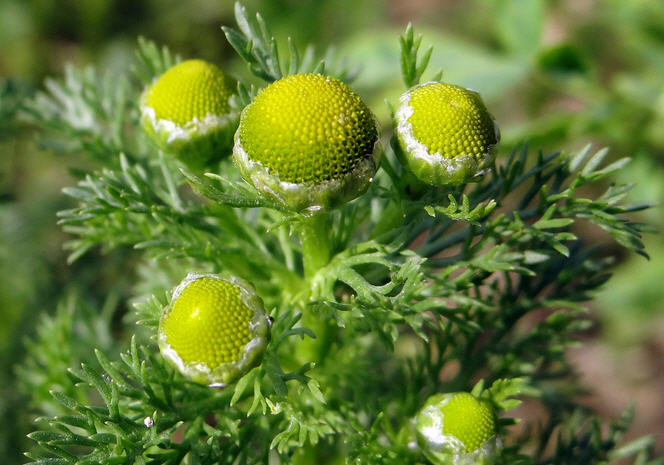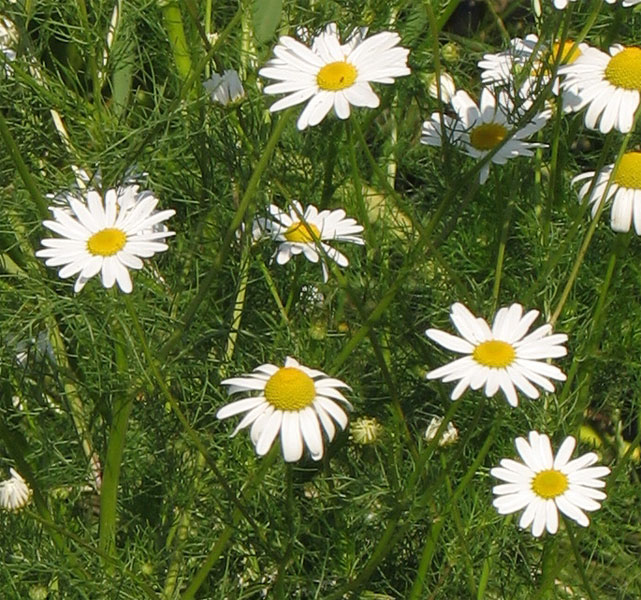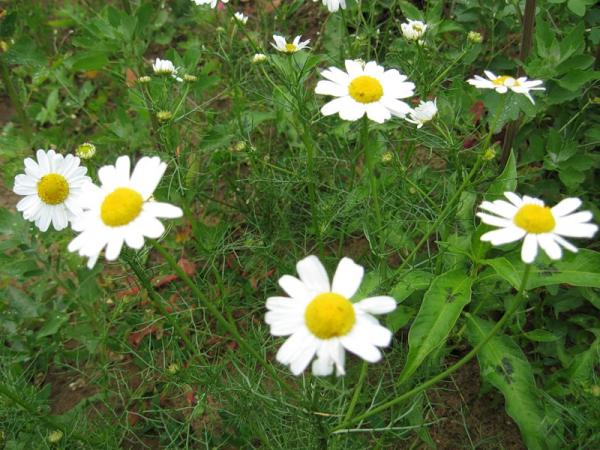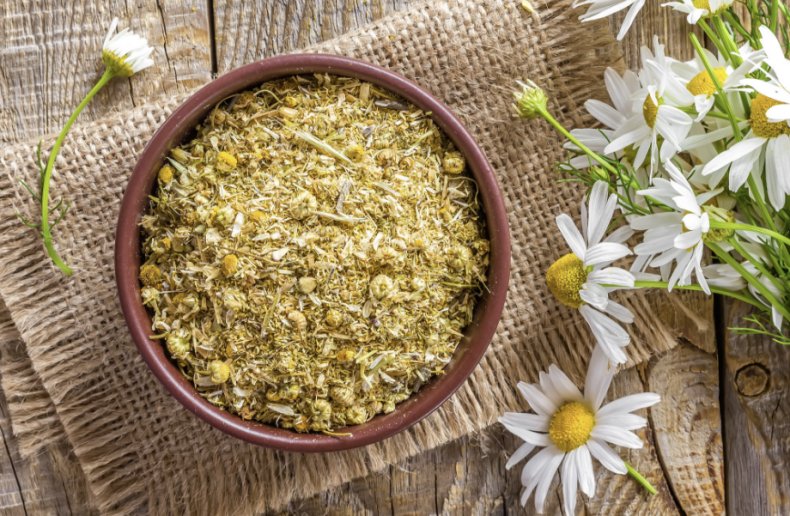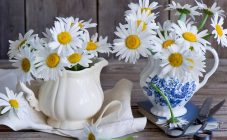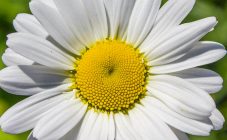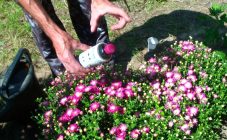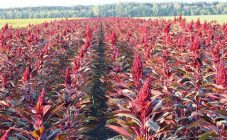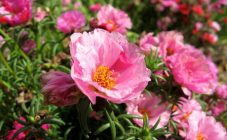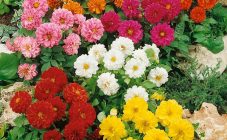Content:
Chamomile medicinal, fragrant or peeled Chamomile, in Latin - Matricāria chamomīlla. The Latin word matrix means uterus, hence another name arose - uterine herb, since since ancient times the plant has been used in gynecology. The Russian name is taken over from the Poles and means - color of the novels, comes from the Latin word romana (Roman). Previously, plants were called pupavki, because of the yellow "navel" towering in the center of the inflorescence.
Culture came to Europe five hundred years ago from North America, along with the expedition of Christopher Columbus. The seeds of the fragrant chamomile were brought just on their feet by the Europeans walking on American soil. Once in the new soil, the seeds took root. Gradually expanding, the healing flower has mastered another continent.
Healing properties (pharmacognosy) of chamomile
Pharmacy chamomile has been used in official and alternative medicine for a long time. To this day, it is one of the most famous plants used in the treatment of various diseases of men, women and children of any age. The plant is listed in the state pharmacopoeias (GF) of many countries of the world.
Chamomile can grow not only in personal plots, but is also cultivated on an industrial scale on special plantations. Preparations from it have the following effects: anti-inflammatory, anti-allergic, sedative and anesthetic.
Flowers contain up to 0.8% essential oil. Chamomile hydrolate (water collected during plant distillation) and essential oil are widely used in cosmetology for hair, skin and nails. The culture is used in the production of soaps, creams and shampoos.
Essential oil is used in the food industry for flavoring liqueurs, tinctures, and also as a solvent for dyeing porcelain products.
Pharmacy chamomile reveals medicinal properties for such diseases:
- gastritis;
- chronic colitis;
- colic and bloating in infants;
- ulcer;
- hemorrhoids;
- rheumatism;
- paraproctitis;
- angina;
- chronic tonsillitis;
- stomatitis;
- hepatitis.
Despite the presence of a large number of indications for the use of chamomile, it also has contraindications. It is required to attach importance to them, intending to use drugs based on it. You should refuse to take chamomile when:
- stomach ulcer, which arose from anacid gastritis;
- a tendency to diarrhea;
- mental disorder;
- diseases of the bladder and kidneys;
- pregnancy;
- allergic reactions to chamomile.
Description and characteristics of the plant
It is a herbaceous annual, 15-40 cm high, with straight stems and pinnately dissected leaves. Taproot, weakly branched, light brown. Hemispherical baskets, 4-20 mm in diameter, are combined into a corymbose inflorescence with 10-12 petals with a spicy aroma.
Occurs on roadsides, wastelands, vegetable gardens, orchards and fields.
Pollinated by wasps, sometimes bees.It begins to bloom early, flowers are widely found in March-April. Blooms throughout the summer and through October.
Knowing what medicinal chamomile looks like, you can determine which chamomile is medicinal. Botanical signs that help distinguish it from the field and other (including decorative) species:
- Colour. The middle is yellow and the edges are white.
- Dimensions. The inflorescence is small, with a diameter of 25 mm.
- Smell. Characteristic tart, spicy, herbaceous.
- Convex middle of inflorescence.
- The cavity inside the inflorescence is found when cut vertically.
- Slight pubescence of the stem.
- The leaves are thin, reminiscent of dill.
Varieties of pharmacy chamomile
There are many different types of chamomile, but mostly decorative varieties. In nature, you can find plants that not only look like a pharmacy, but can also heal. How are they similar to medicinal chamomile and what are the differences?
Odorous (tongueless)
This chamomile is called tongueless because of the absence of petals on it. Inflorescences are greenish-yellow. Its use in medicine is mainly limited to external use. Another name for it is fragrant, as it has a stronger smell than its pharmacy counterpart. Preparations based on it are useful for:
- rinses during ARVI and ARI;
- runny nose;
- conjunctivitis;
- itchy skin and allergies;
- inhalation URT;
- gastritis;
- colitis;
- ulcer;
- bedsores;
- helminthic invasions.
Odorless three-ribbed (odorless chamomile)
Flowers form baskets, 20-25 mm in diameter, on long stems. The flowers are white with a yellow core. The receptacle is not hollow and the flowers do not have a characteristic odor.
Helps with:
- spasms of the stomach and intestines;
- delayed menstruation;
- colds;
- toothache;
- inflammatory diseases of the oral cavity;
- wounds and ulcers;
- hemorrhoids;
- skin diseases.
Daisy
Or Popovnik-perennial. People call it meadow chamomile, novel grass or white flowers.
The bush has high (0.4-1.3 m) stems, ending with single flowers. The root is short, fibrous. There is a leaf rosette near the root.
The healing properties of the poplar have not been studied thoroughly, official medicine does not consider it a medicinal plant. Although in alternative medicine, its use is practiced in the treatment of certain diseases. It has an antispasmodic, laxative, analgesic, anthelmintic and diuretic effect.
Mayweed
Odorless is also called dog. Outwardly, this plant is very similar to medicinal chamomile. But the receptacle of odorless chamomile is not hollow, and it does not have a chamomile aroma. Its therapeutic effect is weaker than that of the medicinal one.
Accepted at:
- colds;
- aches and muscle pains;
- shortness of breath;
- cough;
- weeping lichen.
Planting and caring for the crop
Chamomile is a light-loving, cold-resistant, annual plant. It is advisable to plant it on fertile easy - and medium loamy, moist soils.
Sowing
You can grow grass from seeds or simply plant a plant with a lump of earth on the garden bed. The culture is grown with spring or winter sowing. A month before planting, the earth is dug onto a shovel bayonet. Before digging, add 4 kg / m2 of normal manure. If there is no organic fertilizer, use 6 grams. phosphorus and potassium and 4 gr. nitrogen per m2.
Weeds are removed 10 days before planting, the soil is harrowed and rolled. Sowing is best done before winter at 0.5 cm in depth. In early spring, seeds are sown to a depth of 10-15 mm. Seeding rate - 1 gr. seeds per 5 m2. You can mix a bag of seeds with dry sand 1: 50 and spread evenly over the area. Seeds will begin to germinate at 6-7 ° C heat. The optimum temperature for germination is 15-20 °.
Plant care
Standard care is quite capable of ensuring the normal development of the plant. You just need to carry out on time: watering, loosening and removing weeds.
Subsequent watering is necessary only during prolonged drought. Mulching the plantings will help to avoid overgrowing of the site with weeds and drying out the soil.
Instructions for collecting and drying the plant
To obtain high-quality (like in a pharmacy) raw materials, you need to know how to properly collect and dry them.
The flowers of the plant, which contain the maximum amount of nutrients, are considered medicinal.
From the moment of germination to flowering, 50-70 days pass. Each bush blooms for 7-10 days. Since each plant blooms at a different time, the procurement of raw materials is stretched for two months.
The collection of raw materials is carried out in the initial period of flowering (May-June), when about 10 inflorescences have already opened. They are plucked or cut off together with the stem, 10-30 mm long. Under favorable conditions, you can hold up to 6 fees. At the end of the season, the collection is not carried out, because by this time the raw material already contains little essential oil, and during drying and storage it will crumble, seeds will begin to pour out of it, which will affect the quality of the raw material.
Grass is dried in attics, in dryers with temperatures up to 45 ° C, and in good weather - outdoors in shaded areas. Sunlight must be avoided as this will destroy the essential oil.
The raw materials are spread evenly - in a thin layer (up to 5 cm) on paper or on special frames with a nylon or metal mesh. As the raw materials dry, it must be gently mixed periodically to allow air to enter.
Dried chamomile is rough to the touch, has an intense specific smell, and its color is much darker than that of freshly picked flowers.
Storage of raw materials
Dry chamomile should be stored in glass jars, tin containers, boxes and paper bags. Containers for dry herbs must be clean, well dried and tightly closed. The finished products are stored in a dry and dark place.
It must be taken into account that after the lapse of time, the healing properties of the dried plant product are lost, in view of this, it is necessary to strictly observe the permissible storage periods. If you follow all the storage rules, dried grass does not lose its healing properties for 2 years.
Diseases and pests
Chamomile has strong immunity, but despite this, it is prone to the following diseases:
- powdery mildew;
- gray rot;
- fusarium;
- rust.
Plant pests:
- aphid;
- thrips;
- star-winged flies;
- wireworms.
The main way to control pests and flower diseases is prevention. Do not allow stagnation of water on the soil. Before planting, it is advisable to treat the soil with fungicidal preparations. Dead plant parts must be removed in time.
Pharmacy chamomile is a simple, unpretentious plant that has served people well since ancient times. Despite the passing millennia, chamomile has not lost either its popularity or healing power.

